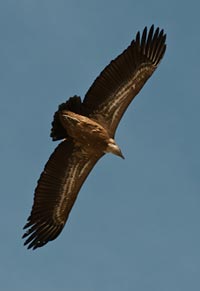In Spain, Scientists Explain What’s in Their Brains, for Conservation Gains
By Wes Hochachka April 2, 2010

Regardless of what Rex Harrison might have so carefully enunciated in My Fair Lady, the rain is Spain is definitely widespread this year. I experienced this firsthand at a conference of the European Bird Census Council and, later, a field trip to the steppes and mountains surrounding the town of Cáceres, in western Spain.
More than 250 scientists from 40 countries gathered here to tackle the challenge of monitoring birds across the European Union. It’s hard enough in North America, where three countries are involved, but the European Union includes more than 25 countries for birds to live in or pass through, each with its own set of national monitoring organizations and schemes. Every three years since 1986, the European Bird Census Council has held this general meeting in order to increase cooperation and coordination of activities. I came away with three general impressions:
First, some countries, notably the United Kingdom, have a long history of bird monitoring, using the citizen-science model very effectively. In contrast, many eastern European countries have a great need in the face of very limited financial resources to build a core of both professional and amateur bird experts that can be called on to monitor.
In spite of these challenges, my second impression was one of a willingness and commitment for countries to work together and build capacity for bird monitoring, which is now a legal obligation for countries of the European Union. The future holds plans for an updated atlas of European birds, and hopefully an initiative to better coordinate the collation of data from emerging checklist programs in many parts of Europe.


After a few days of talks we all assembled for a field trip through the countryside around Cáceres. Though much of Europe’s landscape, by North American standards, is human-dominated—a patchwork of small farms, forest patches, and towns—many parts of Spain are quite wild, with large expanses of prairie-like steppes grazed by cattle and sheep, and broad oak woodlands called dehesas, where livestock also graze. These large and relatively undisturbed habitats have made Spain the European center of abundance for many species representative of the Mediterranean basin. Spain’s diversity of nesting raptors rivals or exceeds anywhere in North America, and Spain also offers species more typically associated with Africa or the Middle East, such as bustards and sandgrouse.


Our time away from the conference rooms helped everyone attending this European Bird Census Council conference to appreciate the natural heritage of Spain, a heritage that, as in so many parts of the world, is in need of careful stewardship in the face of ever-intensifying agriculture.


All About Birds is a free resource
Available for everyone,
funded by donors like you






